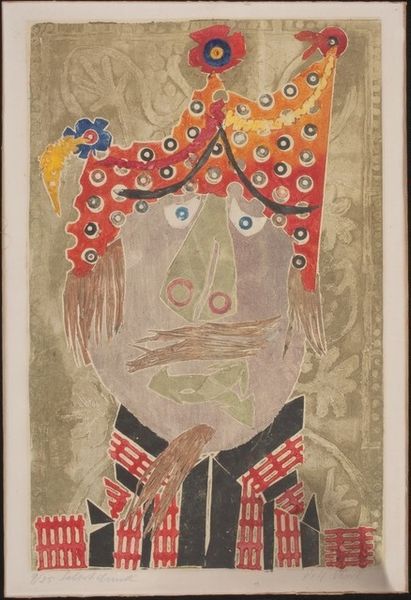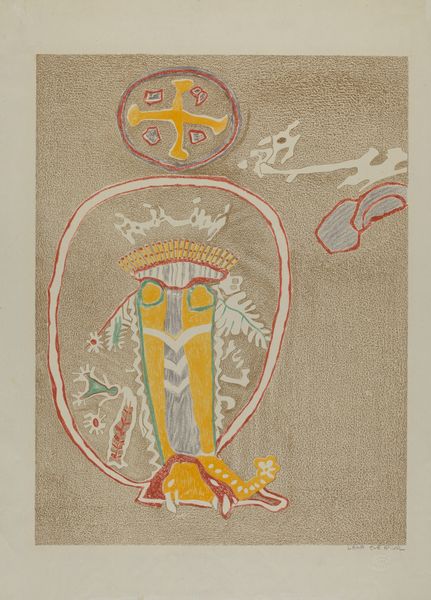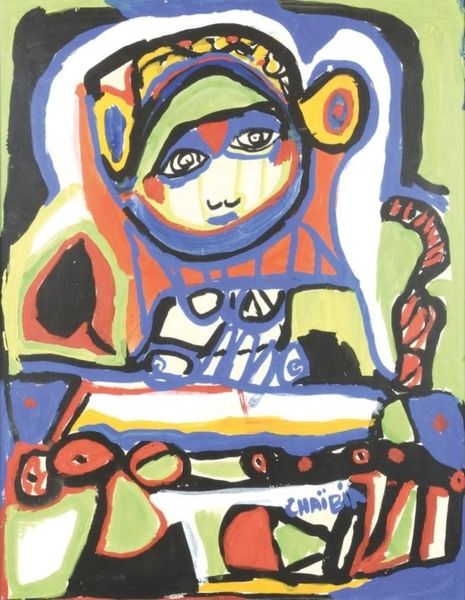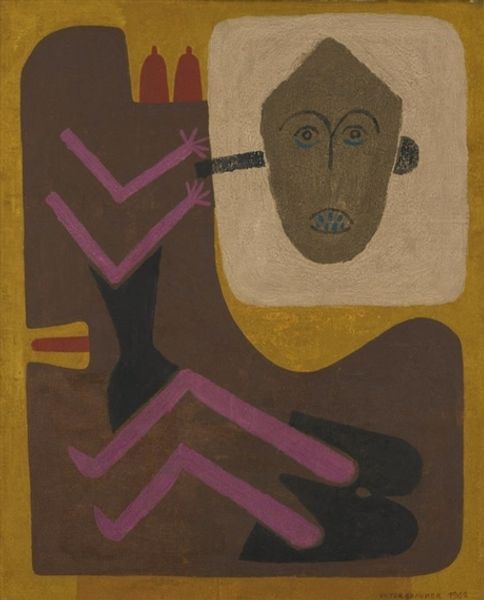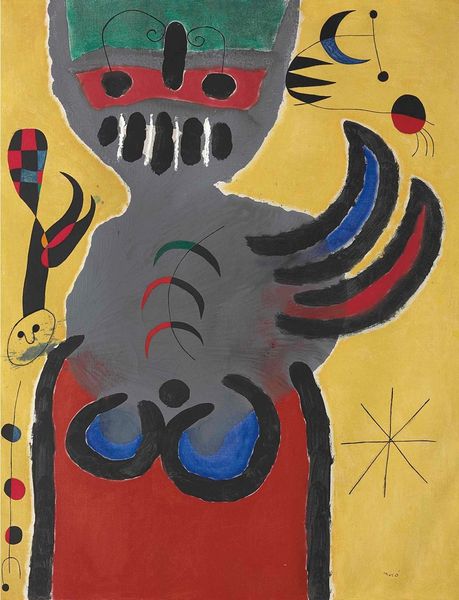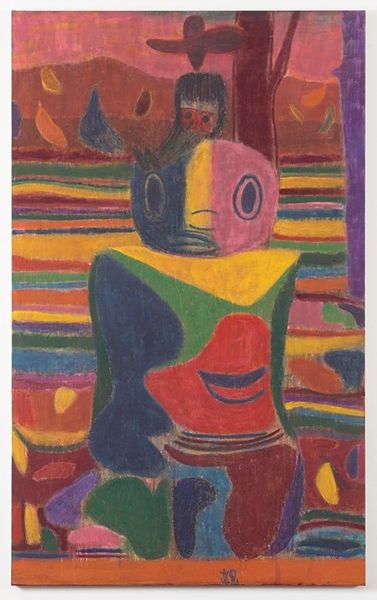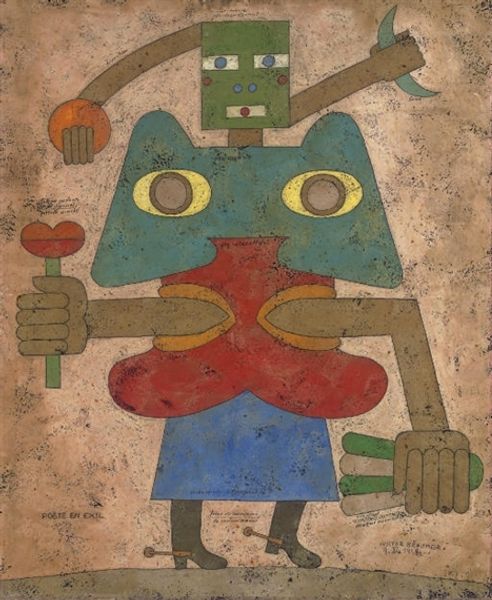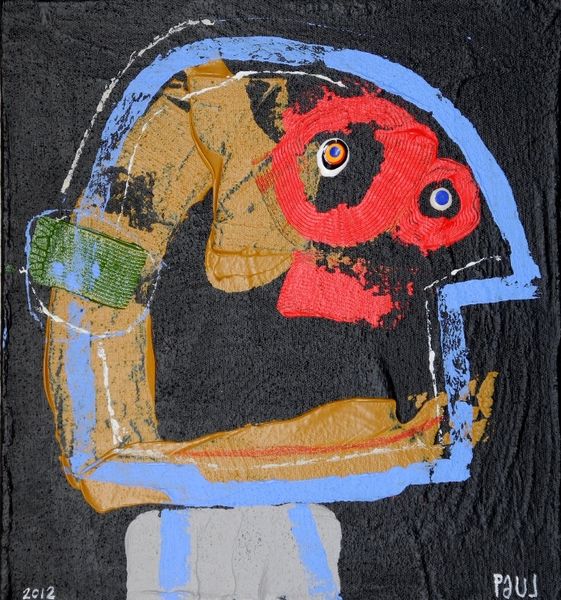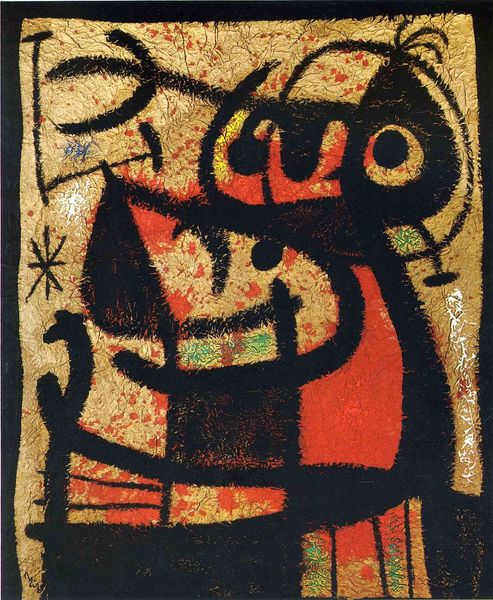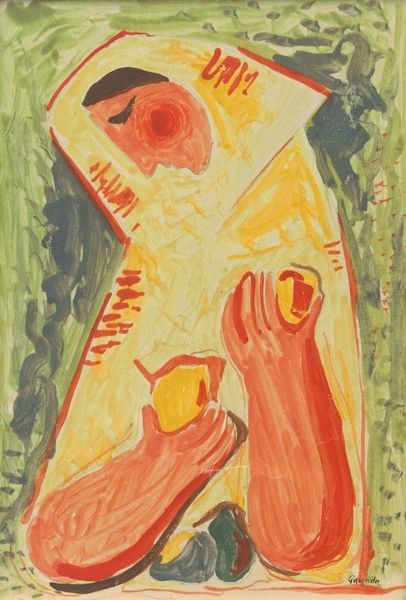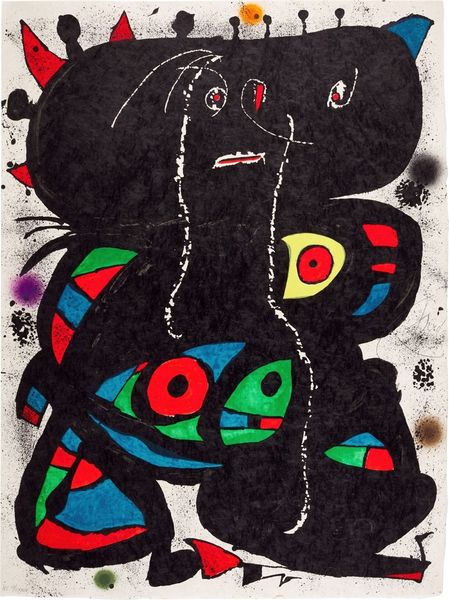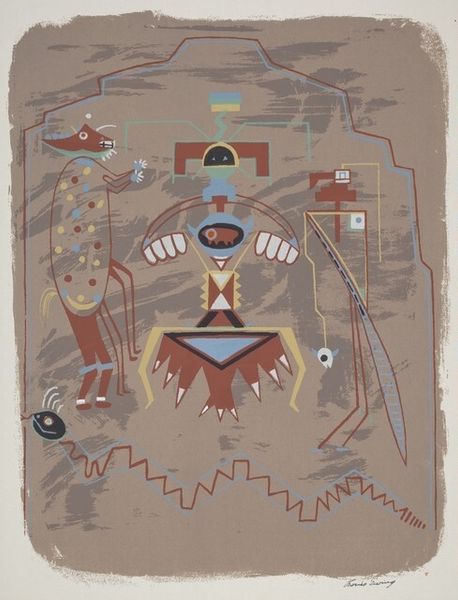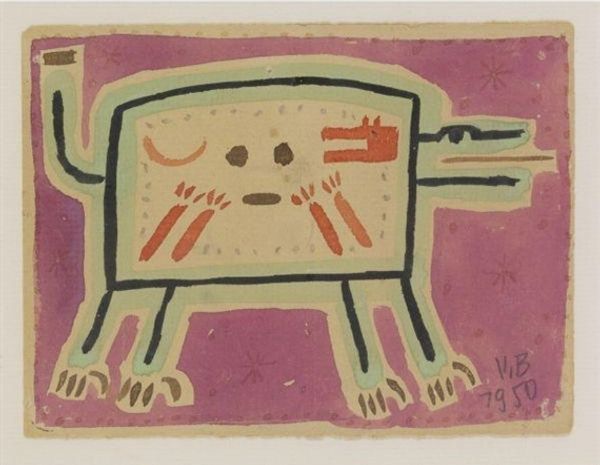
# print
#
caricature
#
caricature
#
figuration
#
abstraction
Dimensions: image: 30.2 x 24.6 cm (11 7/8 x 9 11/16 in.) sheet: 43.1 x 33 cm (16 15/16 x 13 in.)
Copyright: National Gallery of Art: CC0 1.0
Curator: This is "Go-Go," a print created by Will Barnet in 1947. Editor: It's... arresting. The figure has this raw, almost primal quality. The bold blocks of color are intense, and the whole composition is quite flat. It reminds me a bit of folk art, perhaps from the early 20th century. Curator: Exactly! Barnet’s work from this period grapples with figuration and abstraction, a dance informed by both personal and global anxieties following the Second World War. You can almost feel the tension between wanting to represent the familiar, like a mother and child, and a push towards something more emotionally symbolic. Considering his engagement with the anxieties of his time is really pivotal here. Editor: It's the material reality that grabs me, actually. This isn't some photorealistic depiction meant to fool the eye. It's printmaking; the limitations of the medium are right there in the simplified forms and distinct colors. Each layer and its impact. One considers his method, process and access to resources while studying Barnet here. The choice of print suggests accessibility, even a democratization of art. It makes me wonder who this Go-Go doll was originally designed for. Was it a product of wartime constraints or an effort to create art for everyone? Curator: That emphasis on accessibility resonates deeply when you consider the cultural and political landscape. Post-war America saw shifts in gender roles and societal expectations. What would that toy represent in relationship to the larger movement? Editor: True, and look at the colors! These are inexpensive pigments, commercially produced and distributed. No fancy oils or artisanal pigments here. The material shouts about its humble origins, almost a rebellion against the art establishment. Curator: It's as though Barnet is forcing us to reconsider our own notions of value and beauty, isn’t it? The doll takes on even more resonance. "Go-Go," who, I wonder? Editor: Exactly. "Go-Go" also makes one consider issues of race and consumerism within post-war U.S., with mass toy production rising...what commentary on these topics does he hope to make available in this work? Curator: "Go-Go" might invite multiple considerations of accessibility, representation, identity. Editor: Indeed, a print made accessible with humble materials and methods provides a poignant study!
Comments
No comments
Be the first to comment and join the conversation on the ultimate creative platform.
